Marcus Wheeler led a walk to look at the trees of Prospect Park, Reading on the morning of Saturday 26 March. The sky was unbroken blue and the sun was shining strongly but there was a cool easterly breeze. After gathering at the main Liebenrood Road entrance car park, the group set out westwards along the road which leads towards the Mansion House. First stop was the group of white-barked Himalayan Birches near the new mini-golf course. One of the specimens had unhealthy-looking dark patches on its bark. Continuing towards the tennis courts, there was a recently-planted Chestnut-leaved Oak, a tree which is native to the mountain regions of the Caucasus and northern Iran. There followed a brief diversion to the south-facing slopes to look at one of the oldest trees in the park, a large healthy-looking Pedunculate Oak which Marcus estimated was 400-500 years old. Continuing up the hill, fallen timber was still piled up by the roadside, marking the location where a large Horse Chestnut had lost its upper section in recent gales. On the other side of the road was a fastigiate oak, an unusual form of Pedunculate Oak which grows in a columnar shape, rather than the usual spreading form. Magnolia and Wild Cherry trees were covered in blossom. On the slope to the left were an Atlas Cedar, with branches which grew upwards, and an enormous old Cedar of Lebanon, with branches which grew horizontally. Marcus pointed out a Red Oak, originally from North America, with pointed leaves. Nearby, a Brimstone and a Peacock butterfly were flying in the sunshine.
The next part of the walk was through the woodland section near the top of the hill. At the edge of the woodland, dense Cherry Laurel, the smaller-leaved Portuguese Laurel and Holly were all crowding out the ground flora. Further in, Wood Anemone, Lesser Celandine and even a few Bluebells were in flower, Chiffchaff and Stock Dove were calling and Long-tailed Tits moved through the trees. A big Lime had red buds and a mass of twiggy growth near the base of the trunk. Hazel and Blackthorn were just coming into leaf and the Blackthorn was covered in masses of white blossom. The path emerged in the open area on the north side of the park. An evergreen Holm Oak, with points on the young leaves, was inspected. Many of the leaves showed feeding damage from some sort of leaf-mining insect. A pigeon was sitting on a nest deep in an adjacent conifer. Deeply lobed dead leaves were found beneath a Scarlet Oak, a native of North America with spectacular autumn colour. Tall trees, including lime, Beech, Horse Chestnut and London Plane, line the northern boundary of the park. A few of the distinctive small balls of seeds were still dangling from a big London Plane. Marcus pointed out the regenerative bark and smooth flat pointed leaves which shed water easily, helping to make this such a useful tree for polluted urban environments. Historic records from the old Coley Park estate show that London Planes were first planted there in 1750. A ball of Mistletoe was growing close to the top of one of the limes. Higher up the slope, a large branch from a big willow had fallen to the ground but still appeared to be full of life. Similarly, a little further on, a White Poplar had partially shed a big branch which continued to grow from the ground. A steep climb led up to the flatter area near the children’s playground. A densely foliaged, almost cylindrical evergreen tree was identified as a young Wellingtonia or Giant Redwood. Near the road, a tall Aspen was surrounded by smaller suckering specimens. Some of these had plump catkins with red tips. Next to the roundabout, a smallish tree with bright green leaves and flowers was identified as a Southern Beech, native to Chile and Argentina. Heading back towards the car park, there was an avenue of big Beeches, and, finally, another fastigiate tree, this time a smallish Beech.
Afterwards, some of the group went in search of one of Prospect Park’s botanical rarities. Close to the ancient oak which had been inspected earlier in the morning is a good-sized pond, currently home to a pair of Mandarin ducks and a family of Egyptian Geese with 9 goslings. The flowers of Purple Toothwort were found close to the railings on the east, south and west sides of the pond. Purple Toothwort is a parasitic plant without chlorophyll, whose hosts include various willows. It has been known from this site for at least 60 years.

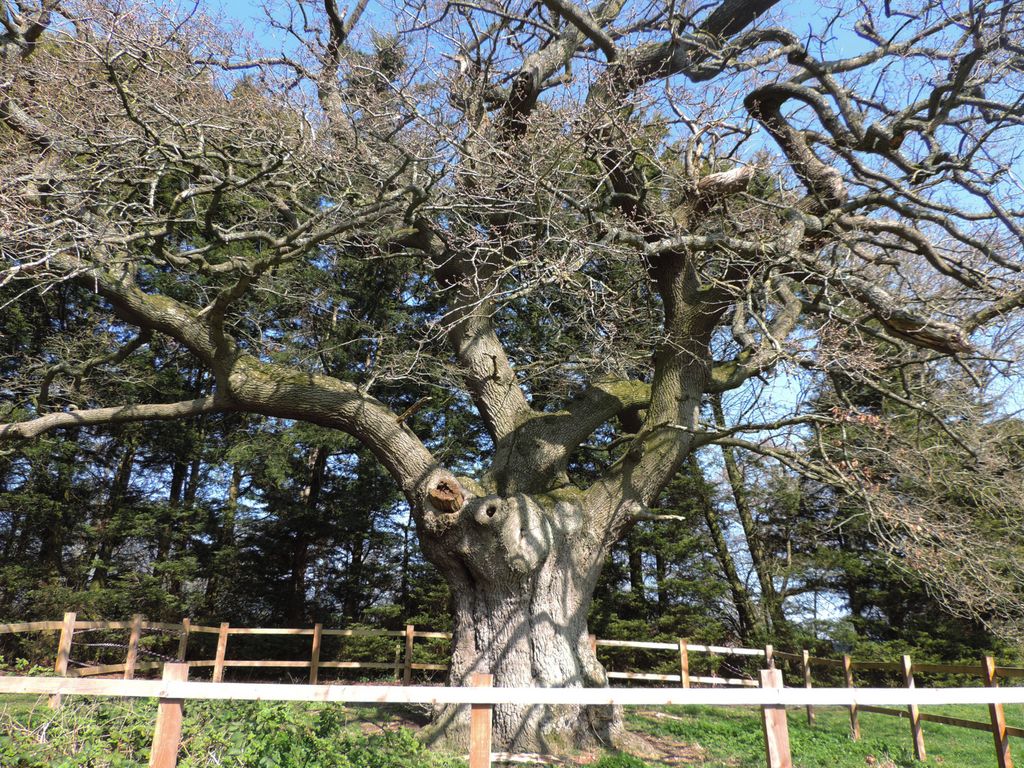
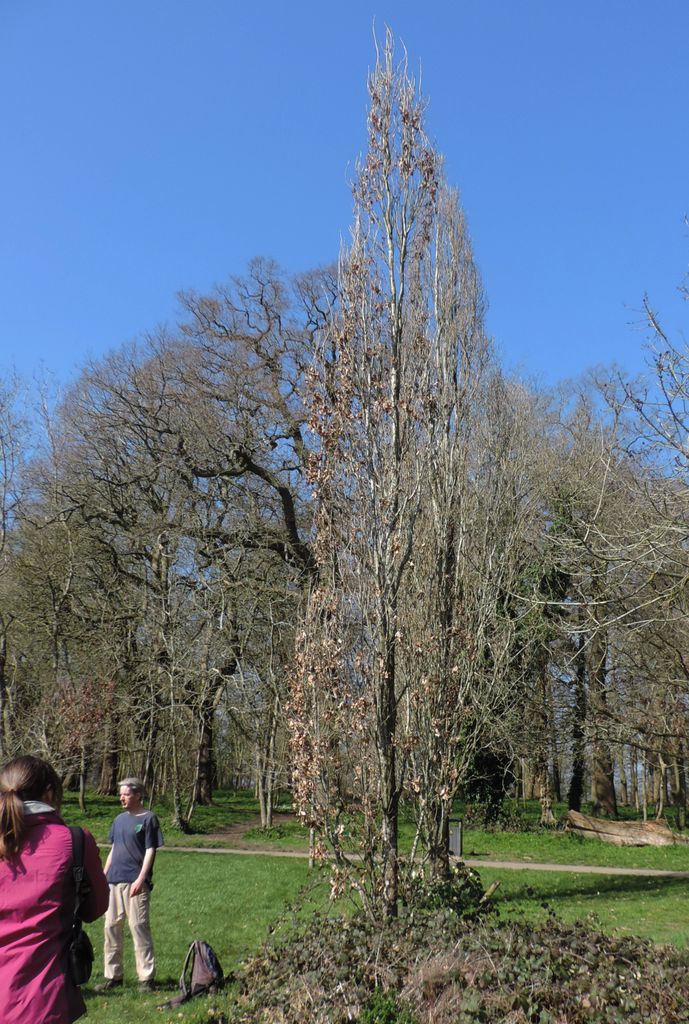
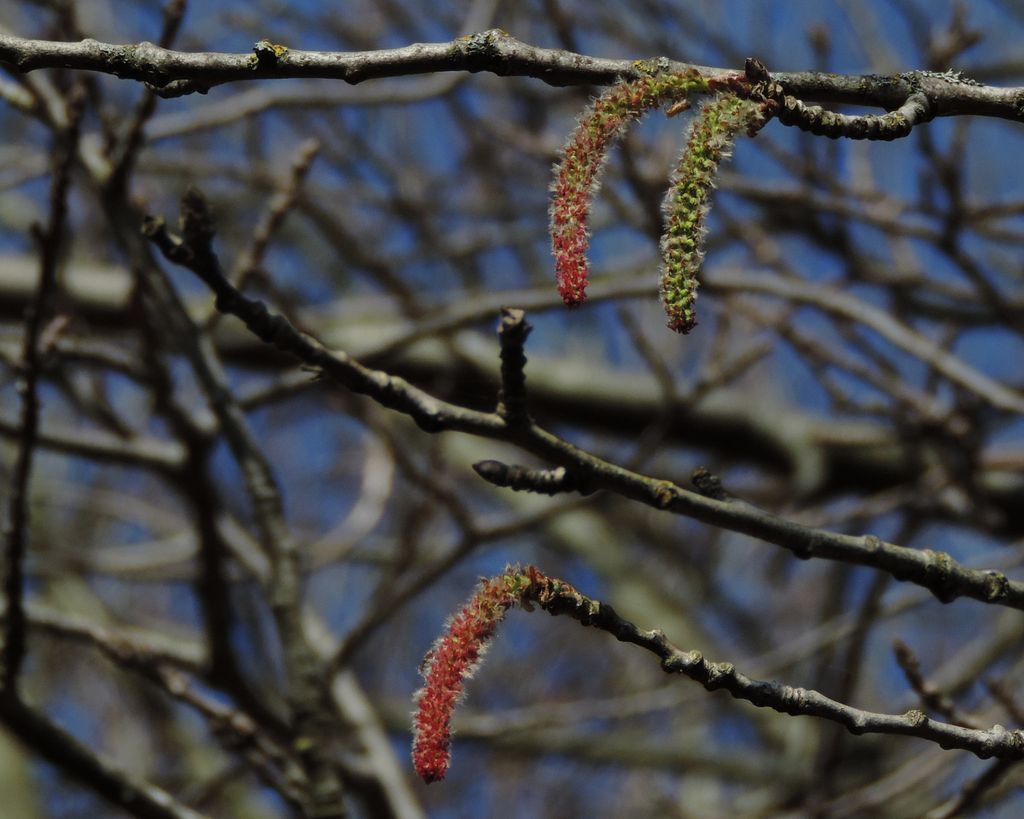
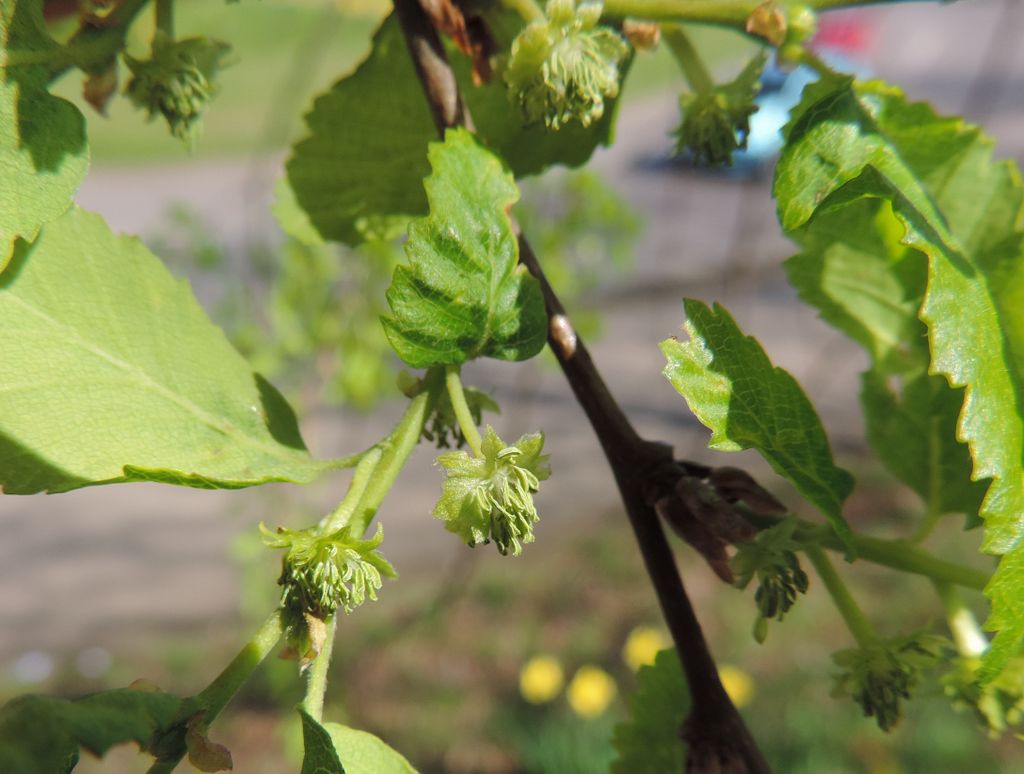
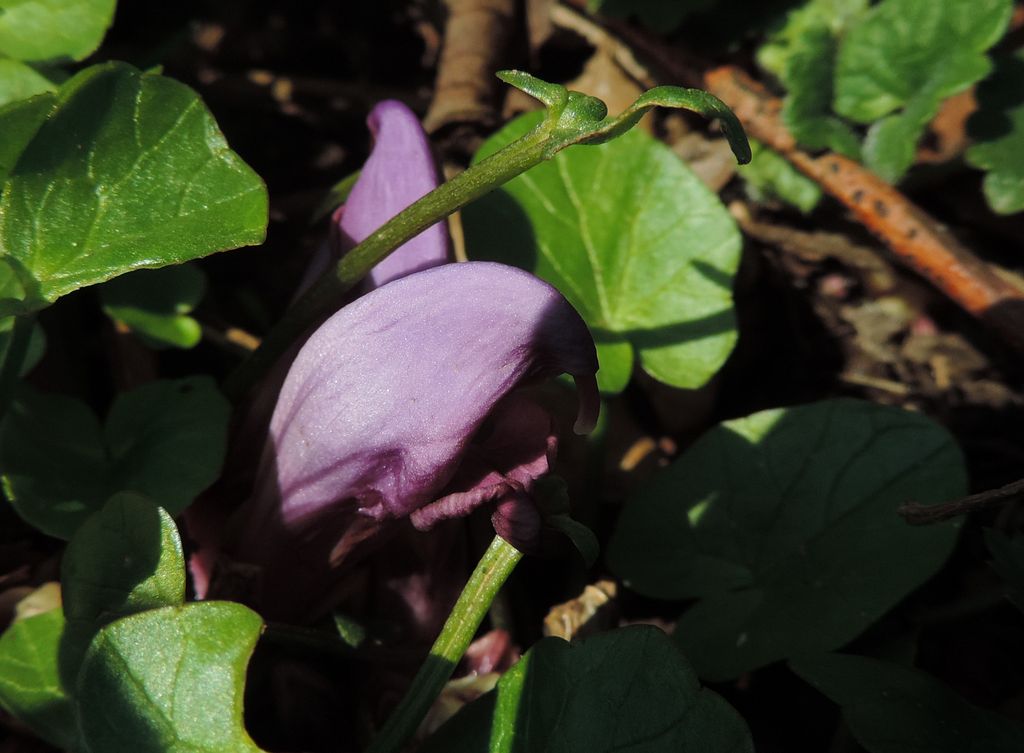
Pictures by Rob Stallard
